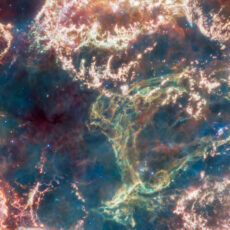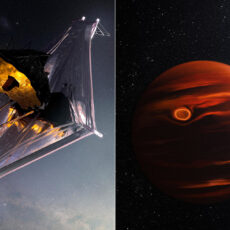
NASA’s Webb and Hubble join forces to capture galaxy pair IC 2163 and NGC 2007, which some say resemble cosmic blood-soaked eyes. On second look, you’ll see that the smaller galaxy on the left, IC 2163, actually slipped behind the larger one, NGC 2207, millions of years ago.

What you’re seeing in this image is data from Webb’s mid-infrared light combined with visible and ultraviolet light from NASA’s Hubble Space Telescope. These two galaxies have high star formation rates and produce the equivalent of two dozen new stars that are the size of our Sun each year.
- Superior Optics: 400mm(f/5.7) focal length and 70mm aperture, fully coated optics glass lens with high transmission coatings creates stunning images...
- Magnification: Come with two replaceable eyepieces and one 3x Barlow lens.3x Barlow lens trebles the magnifying power of each eyepiece. 5x24 finder...
- Wireless Remote: This refractor telescope includes one smart phone adapter and one Wireless camera remote to explore the nature of the world easily...
What’s next for these spirals? Over many millions of years, the galaxies may swing by one another repeatedly. It’s possible that their cores and arms will meld, leaving behind completely reshaped arms, and an even brighter, cyclops-like ‘eye’ at the core. Star formation will also slow down once their stores of gas and dust deplete, and the scene will calm,” said the NASA Webb Mission Team.










